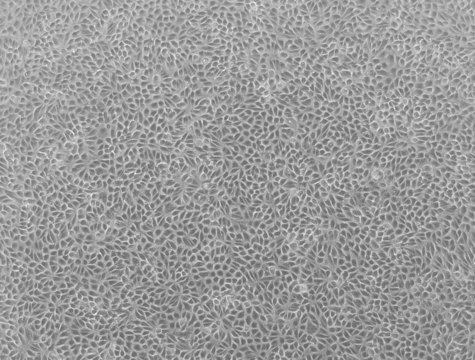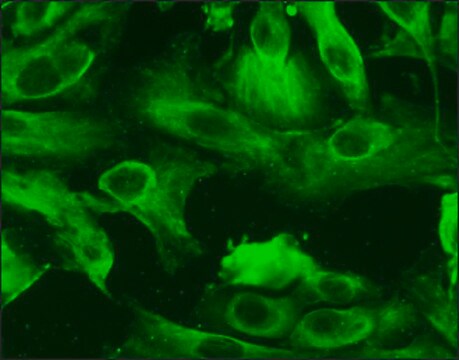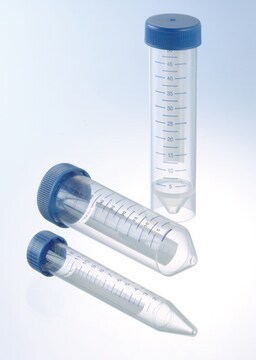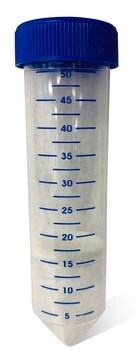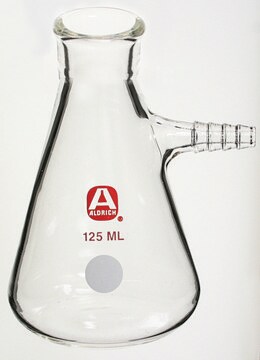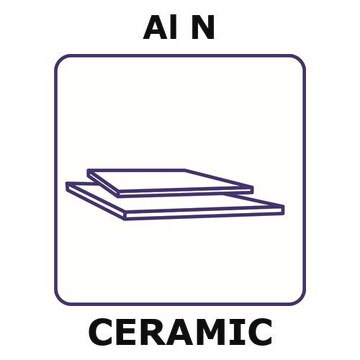HPCT-05-wt
12020703, human kidney, Epithelial
Zaloguj sięWyświetlanie cen organizacyjnych i kontraktowych
About This Item
Kod UNSPSC:
41106514
Polecane produkty
Nazwa produktu
HPCT-05-wt, 12020703
pochodzenie biologiczne
human kidney
tryb wzrostu
Adherent
kariotyp
Not specified
morfologia
Epithelial
receptory
Not specified
Szukasz podobnych produktów? Odwiedź Przewodnik dotyczący porównywania produktów
Pochodzenie linii komórkowej
Ludzka komórka kanalika proksymalnego, nerka, kompatybilna z transportem elektrolitów, duży antygen T SV40
Opis linii komórkowej
HPCT-05-wt został opracowany z pierwotnych hodowli komórek nabłonka kanalików proksymalnych pochodzących od 50-letniego mężczyzny, które zostały zakażone konstruktem retrowirusowym z defektem replikacji kodującym antygen T typu dzikiego wirusa simian virus 40 large. Komórki tworzące elektrycznie oporne monowarstwy zostały wyselekcjonowane i rozszerzone w hodowli. Komórki HPCT-05-wt tworzą spolaryzowane, oporne monowarstwy nabłonkowe z mikrokosmkami wierzchołkowymi, kompleksami połączeń ścisłych, licznymi mitochondriami, dobrze rozwiniętymi kompleksami Golgiego, rozległym retikulum endoplazmatycznym, zwojami podstawno-bocznej błony plazmatycznej i pierwotnym cilium. Linia komórkowa HPCT-05-wt wykazuje aktywność transportową bursztynianu, fosforanu i Na,K-trifosfatazy adenozyny (ATPazy), a także mechanizmy transportu jonów regulowane przez kwaśny dipeptyd i adenozynotrifosforan. Zidentyfikowano transkrypty dla kotransportera Na+-węglanu, izoformy 3 wymiennika Na+-H+, Na,K-ATPazy, receptora hormonu przytarczyc, receptora naskórkowego czynnika wzrostu i receptora wazopresyny V2. Ponadto zidentyfikowano również i mMunoreaktywny kotransporter fosforanu sodu typu II, receptor wazopresyny V1a i CLIC-1 (NCC27). Chromosomu Y nie można było wykryć w tej linii komórkowej za pomocą analizy krótkich powtórzeń tandemowych (STR) -PCR podczas badania w ECACC. Znanym zjawiskiem jest to, że chromosom Y może ulec rearanżacji lub utracie w hodowanych komórkach, co skutkuje brakiem wykrycia. Linia komórkowa jest identyczna ze źródłem dostarczonym przez deponenta na podstawie analizy STR-PCR. HPCT-05-wt różnicuje się w konfluencji, gdy jest hodowany na mikroporowatym podłożu. Komórki powinny być wysiewane w ilości 105 komórek/cm2 na pokrytych kolagenem 30 mM płytkach hodowlanych Millicell-CM (0,4 μm, Millipore) w temperaturze 37 °C. EGF i surowica powinny zostać usunięte z wierzchołkowej strony komory. Podczas różnicowania komórki tworzą spolaryzowane oporne monowarstwy nabłonkowe z mikrokosmkami wierzchołkowymi, kompleksami ścisłych połączeń, licznymi mitochondriami, dobrze rozwiniętymi kompleksami Golgiego, rozległym retikulum endoplazmatycznym, zwojami podstawno-bocznej błony plazmatycznej i pierwotnym cilium.
Profil DNA
Dane STR-PCR:
Amelogenina: X
CSF1PO: 10
D13S317: 9
D16S539: 11,13
D5S818: 12,13
D7S820: 9,12
THO1: 6,9.3
TPOX: 8,10
vWA: 14,17
Amelogenina: X
CSF1PO: 10
D13S317: 9
D16S539: 11,13
D5S818: 12,13
D7S820: 9,12
THO1: 6,9.3
TPOX: 8,10
vWA: 14,17
pożywka hodowlana
>3015 Keratinocyte Medium II (S0196) + >3015 Keratinocyte Growth Supplement (S9945) + L-glutamina (G7513) + 5 ng/ml ludzkiego rekombinowanego naskórkowego czynnika wzrostu + 5% FBS / FCS (F2442). Alternatywny skład pożywki można znaleźć w Orosz et al., 2004 PMID: 14748622.
Rutyna subkultury
Rozdzielić subkonfluentne hodowle (70-80%) w stosunku 1:3 do 1:6 przy użyciu 0,25% trypsyny/EDTA; 5%CO2; 37 °C. Sugerowana gęstość wysiewu 2-4 x 10 000 komórek/cm2. Gęstość nasycenia wynosi około 12 x 10 000 komórek/cm2. Kolby muszą być wstępnie pokryte kolagenem typu I (C3867) rozcieńczonym w stosunku 1:100 z pożywką bez surowicy. Powłoka jest nakładana na noc w temperaturze 37 °C, a następnie kolba jest płukana PBS przed użyciem.
Inne uwagi
W przypadku przesyłek w regionie Azji i Pacyfiku mogą obowiązywać dodatkowe opłaty za transport i obsługę. Więcej informacji można uzyskać u lokalnego przedstawiciela działu obsługi klienta.
Informacje prawne
Stemline is a registered trademark of Merck KGaA, Darmstadt, Germany
Ta strona może zawierać tekst przetłumaczony maszynowo.
Wybierz jedną z najnowszych wersji:
Certyfikaty analizy (CoA)
Lot/Batch Number
It looks like we've run into a problem, but you can still download Certificates of Analysis from our Dokumenty section.
Proszę o kontakt, jeśli potrzebna jest pomoc Obsługa Klienta
Masz już ten produkt?
Dokumenty związane z niedawno zakupionymi produktami zostały zamieszczone w Bibliotece dokumentów.
Nasz zespół naukowców ma doświadczenie we wszystkich obszarach badań, w tym w naukach przyrodniczych, materiałoznawstwie, syntezie chemicznej, chromatografii, analityce i wielu innych dziedzinach.
Skontaktuj się z zespołem ds. pomocy technicznej